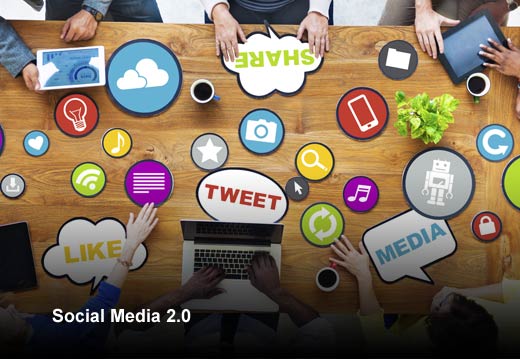There are already well over two billion smartphone users around the world and that number just keeps growing. Smartphones, tablets, wearables, environmental sensors, AI and other emerging mobile technologies are fueling the biggest tech revolution since the creation of the PC and Internet. All of which are dramatically reshaping our world. Chances are, 2016 will be more exciting for both entrepreneurs and consumers than we can possibly imagine. In this slideshow, Appster has identified emerging trends that will likely dominate mobile for the coming year.
The Mobile Revolution
Click through for five mobile development trends expected for 2016, as identified by Appster.
Location-Based Services (LBS)
The location-based services (LBS) market is growing at an incredible 38 percent compound annual growth rate and is expected to quadruple in the coming years. So far, LBS-enabled apps have mostly been limited to telling people where their friends are. However, the market has far more potential than that. Tech giants like Google and Apple are investing heavily in the space, with some of their largest acquisitions being LBS startups (e.g., Waze for $1 billion).
There are huge opportunities in indoor mapping, navigation services, location-based payments, safety, security and more. A number of technologies like beacons, sensors and magnetic fields are being deployed, representing a major shift in computing. The market is ripe for development right now, and innovative entrepreneurs are ready to jump in and build the next hot app.
Wearables
The wearables market exploded in 2014, recording a 700 percent year-over-year increase. Analysts from investment bank Piper Jaffray expect wearable shipments to grow from 21 million units in 2014 to 150 million units in 2019, with a total target market of 1.08 billion people worldwide.
However, the future of wearables isn’t just about making mobile apps available on a different screen. It provides developers an opportunity to deliver new solutions in a completely unique way, and solve problems that can’t be solved in any other form. In fact, the growth trajectory of wearables mimics the growth of tablets just a few years ago. With continued growth in 2016, expect exciting things to happen with wearable technology.
Health Care
A number of factors — the wearables market expected to reach one billion in the next three years, platforms like iHealth rolling out, and the fact that over 50 percent of physicians own a tablet — indicate that the health care market is clearly ripe for a massive technology change.
According to PricewaterhouseCoopers, the global health care market is worth $9.6 trillion. At the same time, it’s riddled with problems and inefficiencies. Fortunately, a host of new technologies is working to change that. This is a new emerging market and all indicators point to 2016 being a breakout year. Whether it’s telemedicine, fitness, cloud-based EHR, Big Data or wearables, many exciting apps and mobile technologies are about to emerge, changing the face of health care forever.
Unbundling Google
According to Forbes, Google is the third largest technology company in the world, generating $66 billion in revenues with a profit margin of around 25 percent. What’s interesting is that while Google has over 150 product lines, 90 percent of its revenue comes from a single source – advertising.
Each of the 150 product lines represents a standalone opportunity for startups. Logically, you can’t do 150 things and do all of them well at the same time. But Google’s business model is all about collecting and selling data to advertisers, and it does it better than anyone else. Thus, many of its services are not particularly great, but they’re free, and that’s the entire point.
Google has business in search, hardware, business apps, developer tools, advertising tools, analytics, location, social media, AI and more. For every product line, there’s an opportunity for someone to do it better.
Social Media 2.0
At the beginning of the social media revolution, sites like Myspace, Friendster and Facebook were all the rage. Unfortunately, the market has been a difficult one to hold on to and even harder to monetize. While Facebook is still going strong, with 1.5 billion users, the only demographic showing much growth is among seniors. Twitter, likewise, has some serious monetization problems, and has become so cluttered it’s no longer adding large numbers of users.
Today, teens are using Snapchat, Instagram, Periscope and Vine — a sure sign that the old is going away and the new is taking its place. The needs of social media users are changing and, consequently, a lot of new players are disrupting the status quo. There’s still no clear winner, so chances are, we’ll see more exciting social apps coming to market this year; one or more of them may become the next Facebook, LinkedIn or Twitter.








